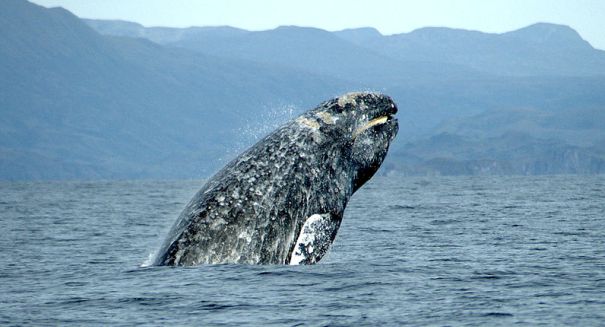
A study found that people routinely overestimate the size of megafauna in the ocean based on media reports compared to scientific journals.
As it turns out, those massively huge sea animals we imagine aren’t as big as we think they are, according to a new study.
Humans aren’t very good at visualizing the size of creatures like the giant squid or whales, with media reports usually exaggerating their size, according to a team of researchers who compared the media’s descriptions with scientific reports. Most animals were actually smaller than reported, according to a LiveScience report.
Craig McClain, a marine biologist at the National Evolutionary Synthesis Center in Durham, N.C., said it is human nature to exaggerate the size of things.
For example, the giant squid is commonly reported to reach lengths of up to 60 feet, but typically the creatures only rarely reach even 40 feet in length, according to McCalin.
One of his students noticed the same tendency in a report about whale sharks, prompting he and a team of researchers to systematically study the reported size of large marine animals and compare them to their actual sizes as recorded in scientific literature and in museum collections.
They created a database of each large creature that were studying and reported average and maximum measurements. They found that reported sizes were routinely overstated.
In one instance, media reports indicated that the Australian trumpet snail was about 35.8 inches, when in reality it is just 28.3 inches. The whale shark is typically about 61.7 feet long, but many reports place the giant fish at length of 65.6 feet.
Reports on some species were accurate, with the largest blue whales measuring at lengths of about 108 feet, something that was typically reportedly accurately in the media.
Other megafauna are tough to judge because their actual sizes are not known with certainty, and rely on anecdotal evidence. The lion’s mane jellyfish, for example, could be up to 120 feet in size, which would make it bigger than a blue whale.
It’s also difficult to accurately measure giant species like the giant squid or blue whale. Some wash ashore. Some can be measured through artificial methods, like putting laser-reflective dots on the side of a whale shark to determine the length with a measure of accuracy. And some use more primitive methods, such as whalers that would cook down one of the giant creatures for fat and determine its weight based on how many pots it would use, according to the report.
Leave a Reply